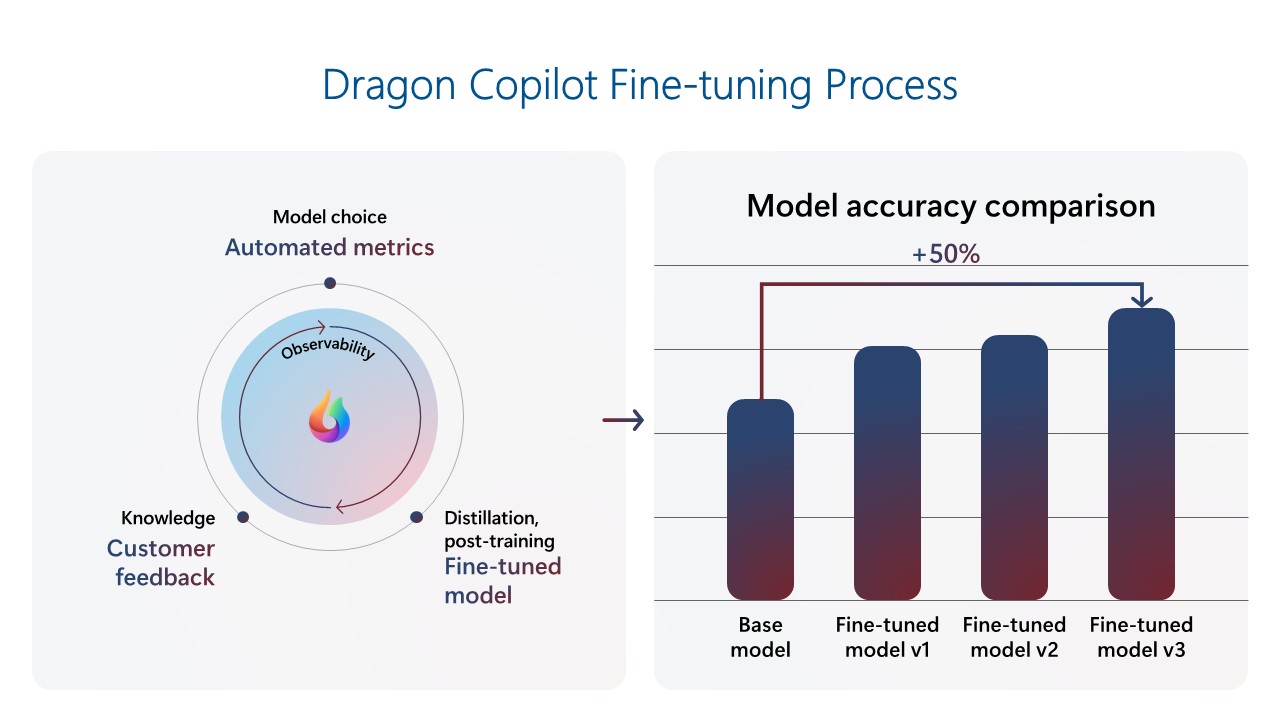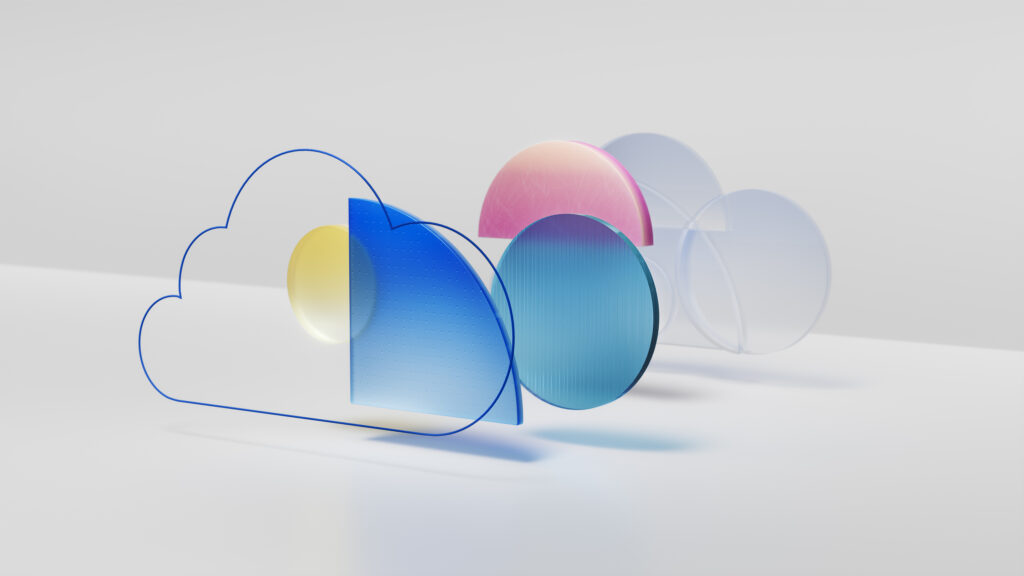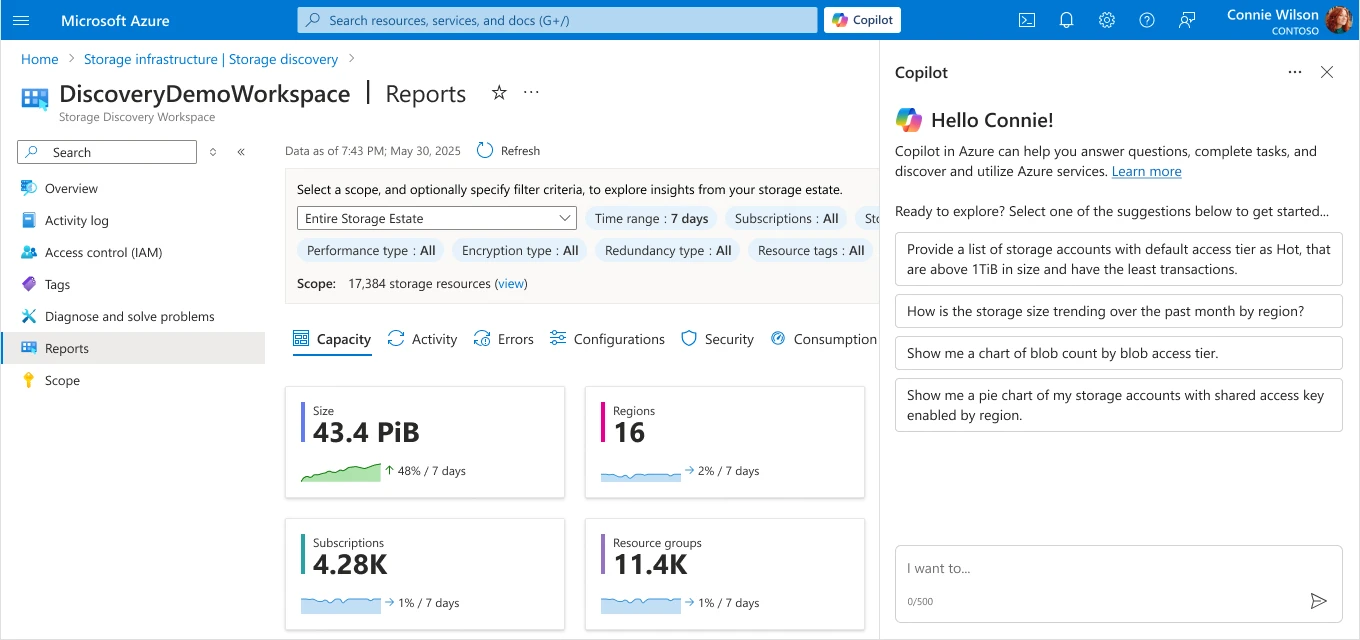Developers are leading AI adoption—and driving transformation across every industry. From writing code to managing applications, they’re using copilots and agents to accelerate delivery, reduce manual effort, and build with greater confidence. Just as they led automation, developers are now reshaping customer experiences and streamlining operations to unlock AI’s full potential.
Transform what’s possible for your business with Microsoft AIIn this edition of FYAI, a series where we spotlight AI trends with Microsoft leaders, we hear from Amanda Silver, Corporate Vice President and Head of Product, Apps, and Agents. Amanda’s leadership has shaped Microsoft’s evolution toward open-source collaboration, and she’s advancing a future where AI transforms how developers build, deploy, and iterate at scale to drive continuous innovation.
In this Q&A, Amanda shares why developer-led AI adoption matters, how agentic DevOps is redefining workflows, and what leaders can do today to maximize impact.
How is the AI landscape changing how developer teams deliver the apps businesses run on? AI is collapsing handoffs across the software lifecycle. DevOps successfully united build, test, deploy, and operate, but the earlier phases—discovery, requirements, shared vision, and initial scaffolding—mostly sat outside that loop. Now copilots can turn natural language ideas into specs and scaffolds, and agents take on tests, upgrades, and runtime operations. The result is a single, faster cycle from idea to impact: lower cost to iterate, quicker transitions, and more freedom to refine until the product fits the business. Think of it like the shift to public cloud: before the public cloud, teams waited weeks to procure hardware and commit capital up front; with the cloud, environments spin up in seconds and you pay only for what you use. AI brings that same elasticity to product definition and delivery—removing friction at the front of the lifecycle and letting teams iterate based on real feedback. Put simply: cloud removed friction from infrastructure; AI removes friction from intent to implementation.
What are some examples of how AI is helping developers re-imagine their daily work? AI is turning software delivery into a true idea-to-operate system. For developers, that means less time spent on manual cleanup and more time focused on creative, high-impact work. Copilots and agents now handle the repetitive, often invisible tasks that used to pile up—like debugging, dependency upgrades, and security patches. Instead of waiting for a quarterly “tech debt sprint,” agentic DevOps lets teams pay down debt continuously, in the background.
A great example is how agentic AI is accelerating migration and modernization. In the past, updating frameworks or moving to new platforms meant months of planning and manual fixes. Now, agents can automate .NET and Java upgrades, resolve breaking changes, and even orchestrate large-scale migrations—compressing timelines from months to hours. This isn’t just about speed; it’s about keeping codebases healthy and modern by default, so developers can focus on building new features and improving user experiences.
The net effect: developers spend less time firefighting and more time innovating. Technical debt becomes a manageable, ongoing process—not a looming crisis. And as AI agents take on more of the routine work, teams can operate in a steadier flow state, with healthier code and faster delivery.
What does that mean for apps? Are they getting better? And how does this impact the role a developer plays?Apps will get better because they become learning systems. With AI in the loop, teams shift from shipandhope to continuous observe → hypothesize → change → validate cycle centered on continuously refining product–market fit. AI can help synthesize telemetry (such as funnels, dropoffs, session replays, and qualitative feedback), surface where users struggle, propose changes (like copy, flow, component layout, and recommendations), and can even wire up feature flags or experiments to prove whether a change works. The effect is a dramatic reduction in timetolearning—and faster convergence on what users value.
PreAI versus PostAI user interaction PreAI (huntandpeck): Users navigate dense menus and deep information architectures, scanning screens to find the one control that does what they need. Every step risks a dead end, and context is easy to lose when switching pages or tools.PostAI (intentfirst): Users express intent in natural language (like text, speech, or multimodal). The app interprets that intent, keeps context, and routes the user to the right data, action, or workflow—often composing the UI on the fly (for example, drafting a form, filtering to the relevant records, and suggesting the next best action). Think of this as moving from “Where do I click?” to “Here’s what I need—do it with me.” What changes for developers From page builders to experience composers. Devs design intent routers and orchestrations that connect models, agents, data, and services—so the app can respond intelligently to varied user goals without forcing rigid click paths.From manual analysis to AI-assisted product loops. Instead of hand rolled dashboards and ad hoc investigations, AI highlights opportunity areas, drafts experiment plans, and opens pull requests with proposed code and config changes. Developers review, constrain, and ship—with guardrails.From “debt sprints” to continuous modernization. Agents can keep the app current—upgrading frameworks (for example, .NET and Java), repairing dependency drift, patching vulnerabilities, and standardizing pipelines—while feature work continues. That turns tech debt into a managed, always on workload rather than a periodic fire drill. Bottom line: AI tightens the loop between what users want and what the app becomes. Developers spend less time on menu wiring and manual forensics, and more time defining intent, composing agentic flows, setting success metrics, and supervising safe, measurable change. Apps improve faster—not just because they’re smarter, but because teams can experiment, learn, and adapt as usage grows.
Where do you see Microsoft standing out in a sea of AI competition? Microsoft’s biggest differentiator is our ability to connect AI agents to the systems, data, and workflows that power real business. We serve organizations with massive, complex codebases and deep operational requirements—and our tools are designed to meet them where they are. With GitHub, Visual Studio, and Azure AI Foundry, millions of developers can access the latest models and agentic capabilities directly in their daily workflow, backed by enterprise-grade security, governance, and responsible AI benchmarks.
software development with github copilot and microsoft azureRead the blog ↗
But what truly sets Microsoft apart is the breadth of integration. AI agents built on our platform can tap into a huge ecosystem of business apps, data sources, and operational systems—whether it’s enterprise resource planning (ERP), customer relationship manager (CRM), human resources (HR), finance, or custom line-of-business solutions. Through open standards like Model Connector Protocol (MCP) and Agent-to-Agent (A2A), agents can securely connect, orchestrate, and automate across these environments, making it possible to deliver outcomes that matter: automating workflows, modernizing legacy systems, and driving continuous improvement.
Yina Arenas’s Agent Factory series shows how Microsoft is building the blueprint for safe, secure, and reliable AI agents—from rapid prototyping to production, observability, and real-world use cases. Our platform isn’t just about building agents; it’s about enabling them to work with the systems and data that organizations already rely on, so teams can move from experiments to enterprise-scale impact.
At the end of the day, Microsoft’s advantage is not just scale—it’s the ability to make AI agents truly useful by connecting them to the heart of the business, with the tools and standards to do it safely and securely.
When should developers decide which tasks to delegate to agents versus tackle themselves for maximum impact? As my colleague, David Fowler, put it: “Humans are the UI thread; agents are the background thread. Don’t block the UI!” Developers should focus on the creative, judgment-driven work—setting intent, making architectural decisions, and shaping the product experience. Agents excel at handling the repetitive, long-running, or cross-cutting tasks that can quietly run in the background: code health, dependency upgrades, telemetry triage, and even scaffolding out solutions to unblock the blank page.
The key is to delegate anything that slows down your flow or distracts from high-impact work. If a task is routine, latency-tolerant, or easily reversible, let an agent handle it. If it requires deep context, product judgment, or could fundamentally change the direction of your app, keep it on the human “UI thread.” This way, developers stay responsive and focused, while agents continuously improve the codebase and operations in parallel.
By striking the right balance, developers can minimize time spent on routine tasks and stay focused on the work that moves products and teams forward.
Why are AI coding tools attracting so much investment and interest? Why reimagine the developer experience now? Because software development already generates the kind of rich, structured signals that AI thrives on. Code and diffs, pull request reviews, test results, build logs, runtime and performance telemetry, issue trackers, and deployment outcomes are all labeled, timestamped, and traceable. That makes the dev environment a natural proving ground for applied machine learning: models can learn from real work, be evaluated against objective checks (like tests, linters, and policies), and improve inside an existing feedback loop (such as Continuous Integration and Continuous Delivery (CI/CD), feature flags, and canaries). In short, we have the data, the instrumentation, and the validation built in.
There’s also a cultural reason: developers automate away friction—from compilers and build systems to version control, CI/CD, containers, and infrastructure as code. Generative AI is the next step in that lineage. It shifts more work from hand authoring to specifying intent and supervising outcomes: copilots help with exploration and acceleration; agents handle continuous code health, upgrades, and safe, reversible changes. Investment flows here because better developer experience maps directly to throughput, quality, and time to value.
And yes—the future starts with developers. As dev teams discover where AI delivers real support in their own workflow, those patterns spread to the rest of the business, accelerating how every function experiments, learns, and ships.
Empowering developers with AI to deliver lasting impactWe’re entering a new era of software delivery—and it’s agentic, adaptive, and deeply human-centered. With copilots and agents in the loop, developers are building systems that continually adapt to business needs. At Microsoft, we’re empowering developers to move from idea to impact faster by focusing on creativity, product vision, and building with trustworthy AI.
In fact, Frontier Firms are already showing us what’s possible. They treat software as a dynamic system—refined through telemetry, experimentation, and AI-powered insight. And across all types of organizations, compelling AI use cases are emerging—from customer service to software engineering—setting the pace for what’s possible with the latest AI tooling.
Empower your people and drive real results with Microsoft AIReady to learn more? Discover resources and tools to accelerate your AI journey:
Learn three skill-building insights that help Frontier Firms drive innovation.Get started with GitHub Copilot.Build your first production-grade agent in under an hour with Azure AI Foundry.Simplify development and meet evolving business needs with Microsoft Cloud solutions.
The post FYAI: Why developers will lead AI transformation across the enterprise appeared first on Microsoft Azure Blog.
Quelle: Azure





